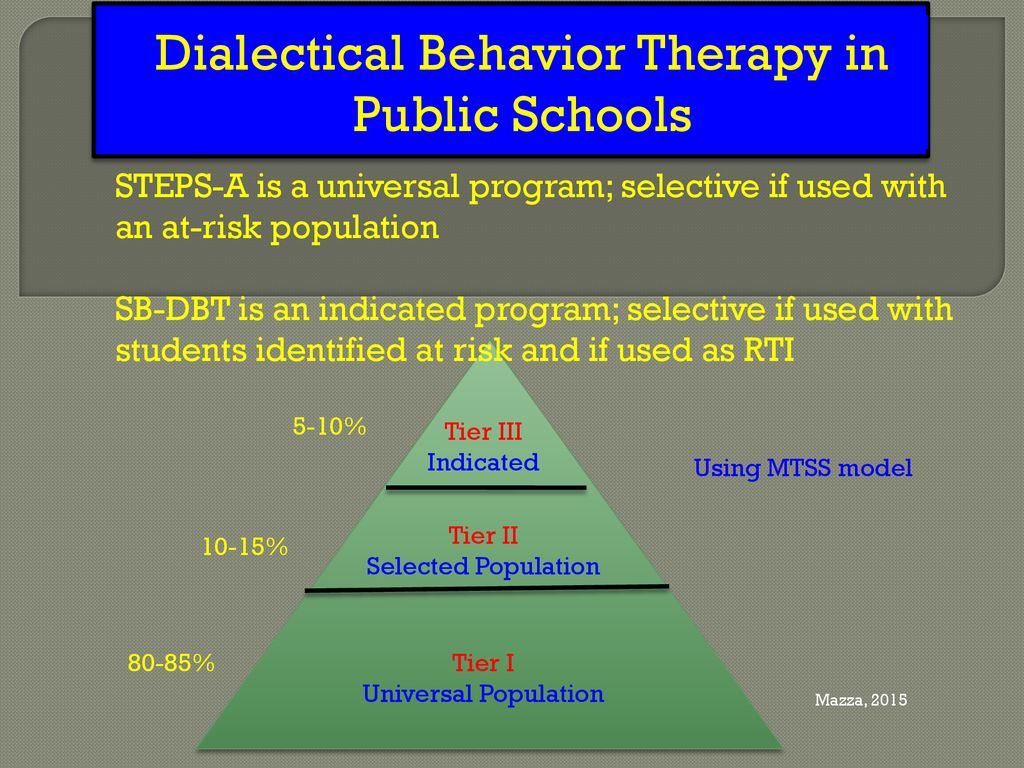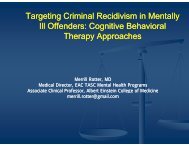- 50% Step By Step 11dialectical Behavioral Training Reliaslearning
- 50% Step By Step 11dialectical Behavioral Training Techniques
Step‐by‐Step Approach for Reopening Operations During COVID‐19. Cognitive Behavioral Intervention (CBI), Thinking for a Change (T4C). Classroom training 50‐75% of room capacity as appropriate by class Resume Control/Impedance Tactics (CIT) re‐qualification, class size 12. Oppositional defiant disorder (ODD) is approximately 50% heritable and 50% environmental. Risk factors span from the individual to the cultural and include genetic alleles affecting dopaminergic and serotonergic neurotransmission, difficult child temperament, parenting practices such as harsh discipline and poor monitoring, peer influences such as bulling or rejection, and social. Consider a 50% probability of success: ‘Failing’ one-out-of-two times when failure implies running out of money in retirement simply does not sound acceptable. Such a result can make clients feel that they are unprepared for retirement and that they must save even more or retire even later so that they can achieve a higher probability of. Start your journey toward an exciting and personally fulfilling career as a adaptive special needs fitness trainer. Our Level 1 Certification teaches science-based fitness and behavior principles for working with individuals who have special needs and other disabilities one-on-one. AIT Extension contributes to the development of the region through continuing professional education, short-course training and consultancy services. We do this by working to develop highly qualified and committed professionals who play a leading role in the sustainable development of the region and its integration into the global economy.
50% Step By Step 11dialectical Behavioral Training Reliaslearning
The Clinician’s Guide to Oppositional Defiant Disorder: Symptoms, Assessment, and Treatment uniquely focuses on practical strategies for assessing and treating Oppositional Defiant Disorder (ODD) in youth. After briefly reviewing clinical characteristics of ODD and known causal factors, the book reviews brief and easily administered assessment measures of ODD. It further describes efficacious treatment elements across different treatment protocols that can be personalized for young children, older children, and/or adolescents that are based on unique clinical and family characteristics. Assessment and treatment tips for addressing commonly co-occurring problems, such as difficulties with toilet training, lying, problems with peers, and aggression are included.
Finally, the book includes practical tools, such as therapeutic handouts, sample rating forms, and psychoeducational materials for parents and clinicians, along with links to online materials for ease of use in applied clinical settings.


I’ve received some angry emails from PhDs who took issue with my contention last week that past behavior is not the best predictor of future performance. For one thing, behavior and performance are two different things. So even if past behavior does predict future behavior, it has little to do with hiring someone for a job that is even slightly different than the one the person did before. But that’s just a minor issue, the negative consequences of using a behavioral interview can make matters worse. Given all of this, here are 10 more reasons why you shouldn’t use behavioral interviewing:
1. It’s, at best, a modest predictor, but certainly not the greatest. It takes a combination of behaviors to achieve a result and this mix changes over time based on the circumstances and level of the job.
2. There’s more than one way to skin a cat. I’ve met great sales people who are quiet and steady and others who are aggressive and persistent - selling the same products to the same customers! The only common factor is the results they’ve achieved. The same is true for engineers, YMCA camp counselors, nurses, executives, and every other position you can imagine.
3. Circumstances are a bigger factor than behaviorin predicting success. A different boss, different team members, different company, different culture, and different resources have a bigger impact on success than behavior.
4. It assumes the candidate is fully prepared to provide all of the information needed to make a correct assessment. Most behavioral interviewers focus on the person’s presentation skills and ability to describe their behaviors, not the person’s actual behaviors in situations exactly like the person will encounter in the new job.
5. It assumes the candidate is actively looking for a job. Passive candidates are turned off by behavioral interviewing. These candidates correctly assume that someone using a behavioral interview doesn’t understand real job needs and as a result will opt-out from the situation. If the interviewer actually knows what it takes to succeed on the job they wouldn’t need to ask a behavioral question. They’d ask this one performance-based question instead.
50% Step By Step 11dialectical Behavioral Training Techniques
6. The purpose of the interview is more than just assessing the person. Interviewing a top person – especially a person who is not looking – involves as much information sharing and recruiting as an assessment of ability and fit. Behavioral interviewing is not equipped for this broader role.
7. Senior managers and executives being interviewed by those who use behavioral interviewing are viewed as less professional. Can you imagine a CEO asking a VP Marketing, “Can you tell me about a time when you showed marketing leadership?” You’ll get a lot better results by saying, “Walk me through the most complex marketing strategy and business plan you put together.”
8. Most managers only use behavioral interviewing to exclude candidates, not to hire them. We did a big study with a large insurance company for sales reps that concluded the behavioral interview was used primarily to exclude those the interviewers didn’t like. They needed to provide evidence to HR that the decision to not hire was justified. We switched the questioning to the form of, “Can you walk me step-by-step through your biggest sales deal from getting the lead to the final close?” Not surprisingly, more than 75% of the candidates hired this way made quota the first year vs. less than 50% using behavioral interviewing. (Here’s the full handbook for those interested.)



9. It’s difficult to go from the behavioral interview to the assessment. Mapping the behavior to actual job needs is not an easy task. This is the reason those who have the “correct” behaviors still underperform.
10. It doesn’t raise the talent bar, it just minimizes mistakes. The reason there is some correlation between behavioral interviewing results and future performance is the fact that it’s a structured interview. Any structured interview would get similar results since emotional biases are eliminated and objectivity increased. There is no evidence that stronger people are being hired. (Happy to do a head-to-head comparison on this if anyone is up for the challenge.)
Over the course of the past 35+ years I’ve seen some great people not get hired for dumb reasons. Sometimes this has to do with superficial interviewing, an over reliance on first impressions, too narrow a focus on technical competency, or too much intuition. While behavioral interviewing can minimize some of these mistakes, in my opinion it doesn’t meet the real world needs of hiring top passive candidates who don’t want to be interviewed, want more money than in the budget and where the circumstances of their past jobs are somewhat dissimilar from the new one. Ignoring these issues is another example of not seeing the forest for the trees.
_____________________
Lou Adler (@LouA) is the CEO of The Adler Group, a consulting and training firm helping companies implement Performance-based Hiring. He's also a regular columnist for Inc. Magazine and BusinessInsider. His latest book, The Essential Guide for Hiring & Getting Hired (Workbench, 2013), provides hands-on advice for job-seekers, hiring managers and recruiters on how to find the best job and hire the best people. You can continue the conversation on LinkedIn's Essential Guide for Hiring Discussion Group.
